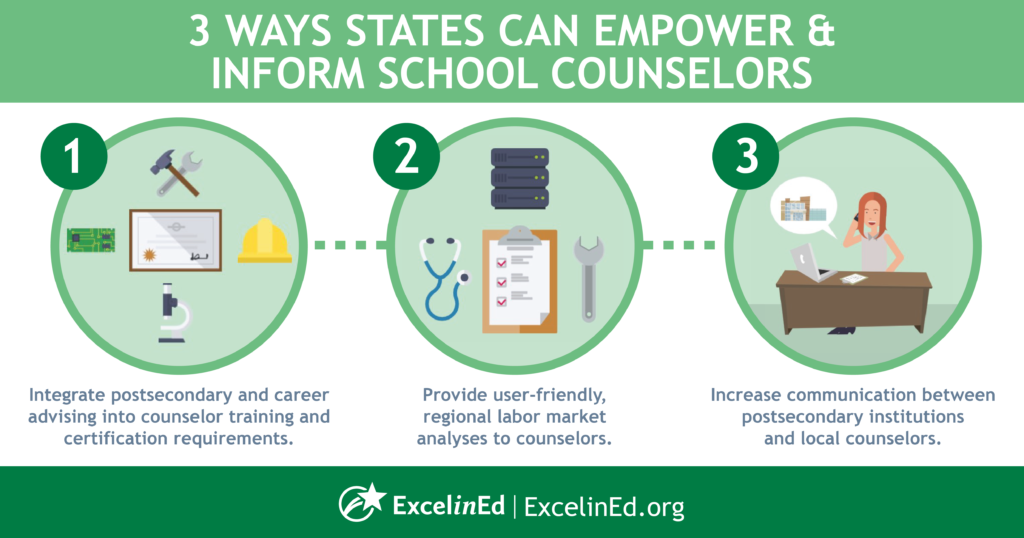Adriana Harrington is the Managing Director of Policy for ExcelinEd.


Today is not only the start of Career and Technical Education (CTE) Month, it is also the start of School Counseling Week.
I don’t know about you, but I take celebrating CTE Month and School Counseling Week very seriously. It’s the perfect opportunity to thank CTE teachers and counselors for their important work. And after all, the two go hand in hand. Counselors play an instrumental role in supporting all students through their K-12 careers and ensuring that they are armed with essential knowledge to make decisions that will set them up for postsecondary and career success. These decisions affect both general and career and technical education.
But do school counselors have the most relevant information they need to effectively advise students in postsecondary and career? Most would say no. So how can states help counselors ensure students are well-informed about postsecondary and career options?

To help students weigh their interests and identify next steps both within high school and after, counselors need to have information on the full spectrum of student opportunities. The state’s Department of Higher Education can consider requiring postsecondary and career awareness and advisement training in counselor certification program requirements. While many counselors receive some training related to college programs, they also need critical training in occupational options and pathways that extend beyond four-year college and university admissions. State Boards and Departments of Education can then fold in ongoing supports through trainings and guidance.
Additionally, many state CTE organizations can be great partners in this work as they offer resources and trainings for school counselors (such as the Virginia Association for CTE or the Georgia Association for CTE). Perkins funding can be used to send counselors to these trainings, or to provide specific counselor training around CTE and career advising.
We all recognize the importance of labor market data and their alignment (or misalignment) with CTE programs. But states cannot simply assume that this information is part of the student advising process. The state’s Department of Workforce Development (Labor) and the Department of Education can consider collaborating to provide tools on labor market data to school counselors. This labor market data can highlight career information such as which careers are growing or which are experiencing a shortage of qualified applicants. By providing counselors with labor market data, states can help reach students with information on viable, high-quality careers in their region. How to use these tools can then be folded into the training supports provided by the Department of Education listed in the above recommendation.
Counselors proudly clap and cheer as their students cross the stage at graduation, but they often never know what happens to their students afterward. Counselors are left with the following questions about their students—and students across the state:
Answers to questions like these would empower counselors with data to improve how they are advising their current students. The state Department of Higher Education can consider packaging and sharing this information with high schools, especially counselors.
Even dynamic duos need additional support now and then, and states that implement these three action steps could strengthen both counseling and CTE opportunities for students.
